

Long before the powerful voices of the Thunberg generation were even dreamt of, John Burningham saw children as being not only deeply aware, but as the antidote to the destruction of the earth and its resources.
He was keen to introduce environmental themes to his work. Oi! Get Off Our Train managed to maintain a spirit of fun while tackling a momentously serious subject, the erasure of species. A young boy dreams that he is driving his toy train and a parade of animals beg for lifts because their habitats are being destroyed and eventual extinction looms. Birmingham contrasts his warm and dreamy palate with sombre tones, the darkening skies signalling impending danger.
“The story is about endangered species, but more than that it’s about the social hierarchy of young children and the need to ease themselves into a group”
“Please let me come with you on your train. I live in the marshes and they are draining the water out of them. I can’t live on dry land, and soon there will be none of us left”

The story was commissioned by the West Japan Railway Company for Expo 90, world fair, held in Osaka. The story had to include Japan’s first steam locomotive, the SL Yoshitsune and the commission included designs for three full sized railway carriages plus two earth-quake proof station buildings.
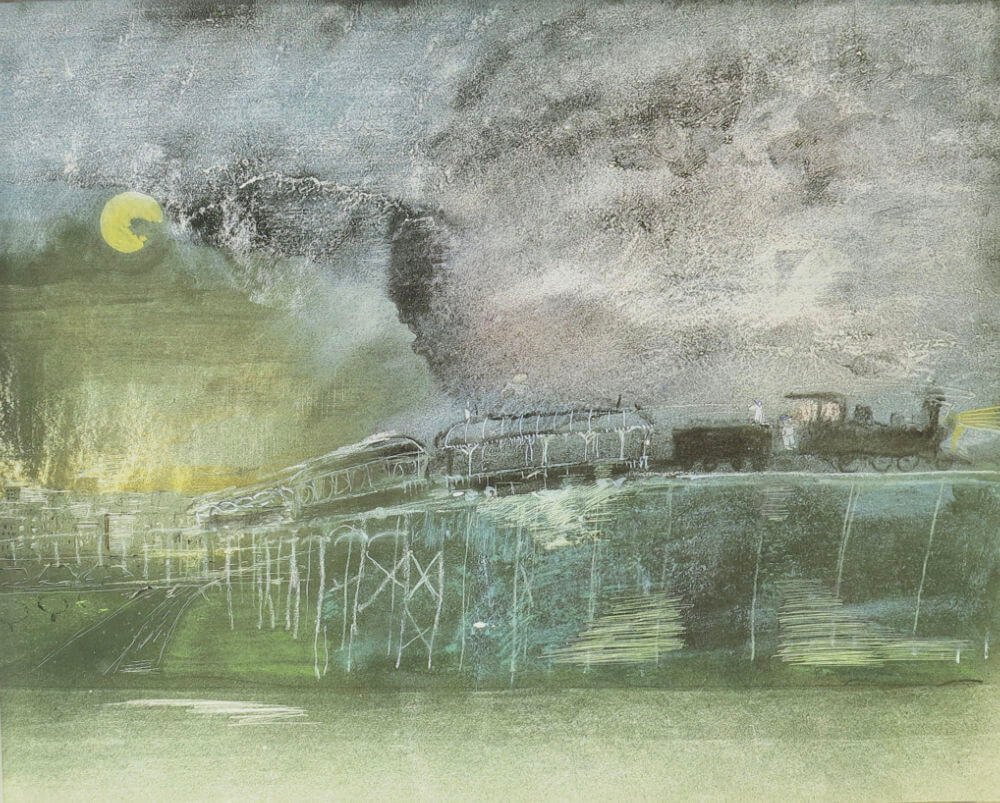

Oi! Get off our Train was dedicated to Chico Mendes, who did so much trying to protect the rainforest. He was murdered for his work.
It was first published in 1989
Ten years on in 1999, the situation had darkened further and Burningham created the daring and whimsical environmental fable Whadayamean with its powerful existential message about the damage done. God and two small children tour the planet and encounter hunger, destruction, and decay everywhere they go. The children are tasked with teaching the adults to change before it is too late, and God later returns to survey a vastly improved situation. Whadayamean was critically acclaimed, revered for its outstanding mixed-media art-work and formed the basis for thought-provoking conversations amongst both children and adults.
“What I did with the story, was decide what had to be done if the children were empowered to sort out the troubles of the earth. They would have to tackle the people who run the world…”
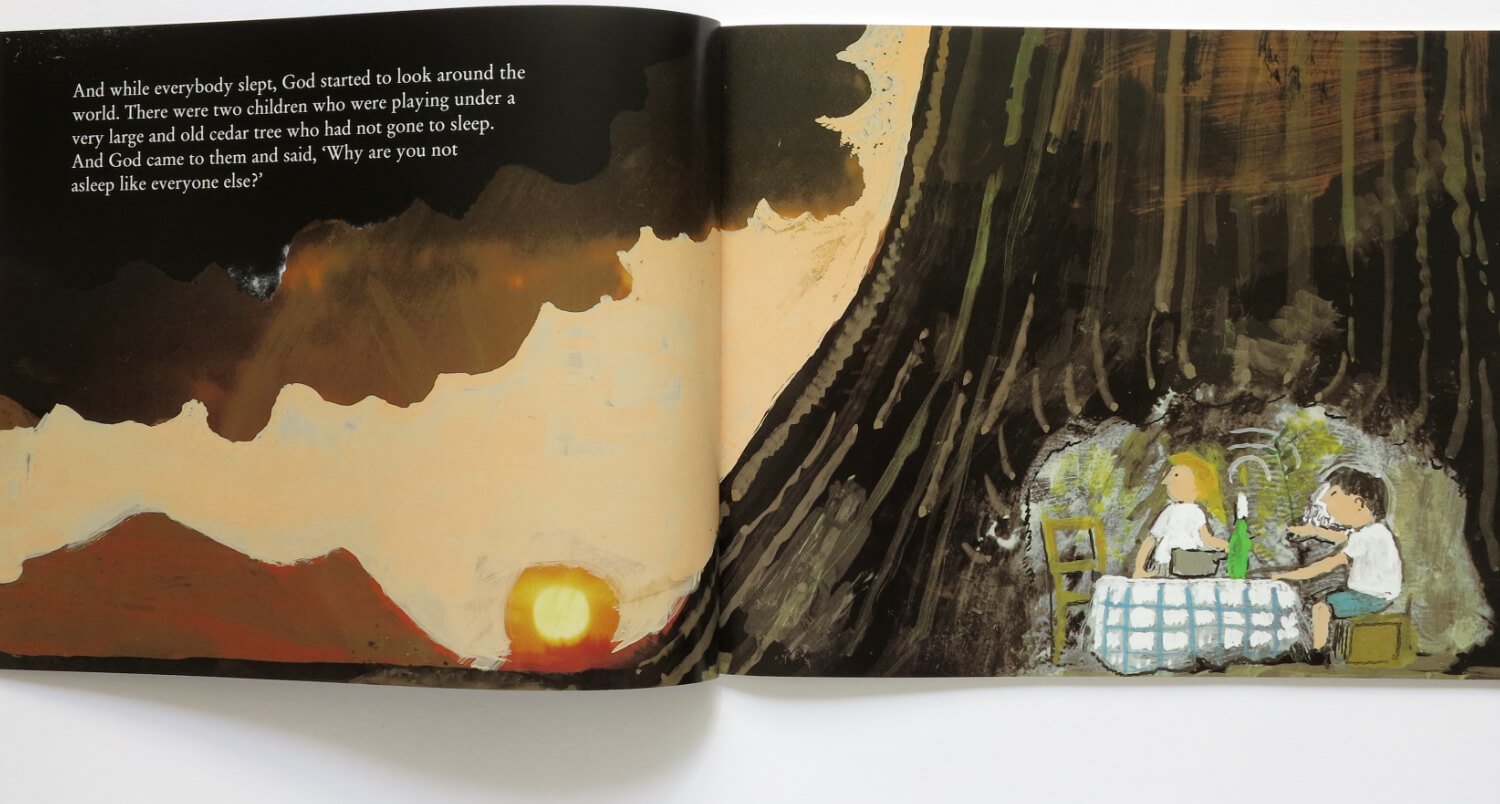
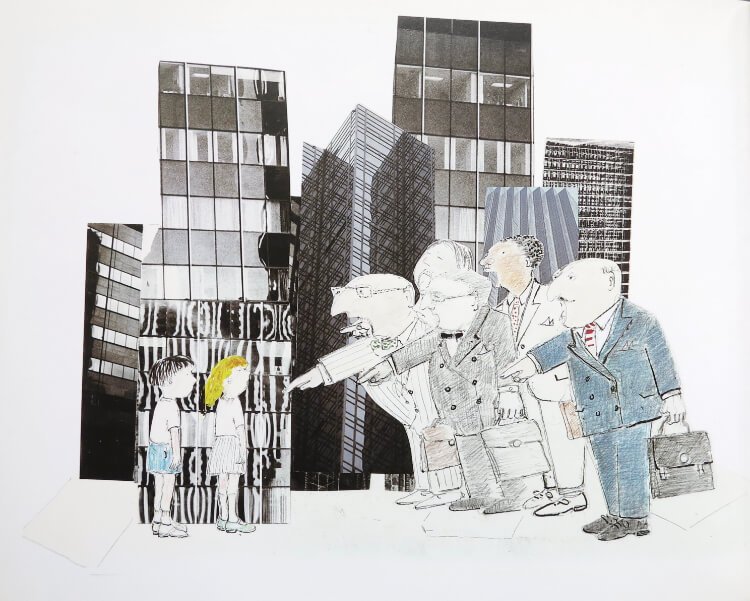
… and so the little children set out to find the men with the money who cut down the trees, dirtied the waters and fouled the air.

… and those who said they spoke for God stopped quarrelling amongst themselves
… and those who didn’t have enough to eat, had enough to eat
And the world became a better place
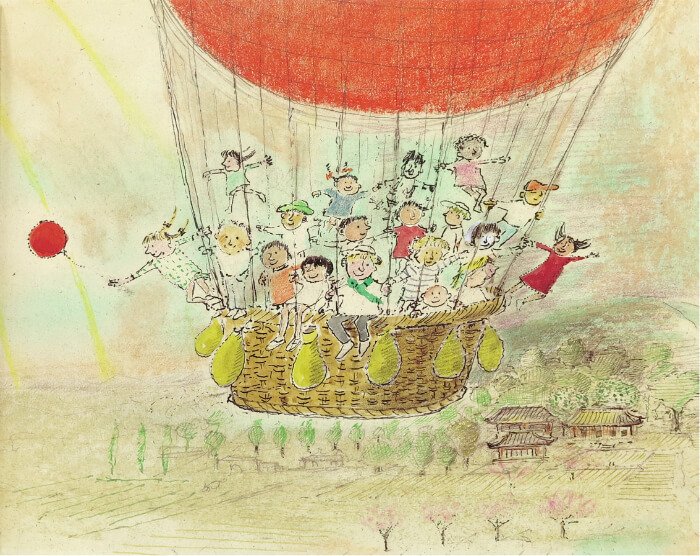
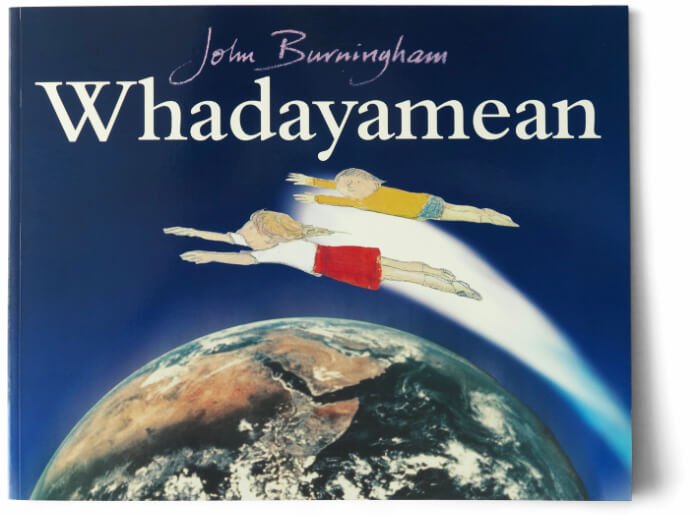
Whadayamean was commissioned for Expo 99 which was held in Wakayama, in Southern Japan. The theme of Expo 99 was the environment and John Burningham was taken on a tour of the rivers, coastline and ancient forests of that region. He describes ancient cedar trees so large you could in some cases climb between the roots and under them. From this trip he developed the story of Whadayamean
It was first published by Jonathan Cape in 1999
Publishing enquiries: Clare Conville, Conville Walsh
Exhibition and artwork enquiries: Selina Skipwith
Press, marketing, events and other enquiries: Philippa Perry
Privacy | Terms and conditions
© John Mackintosh Burningham Business Assets Trust